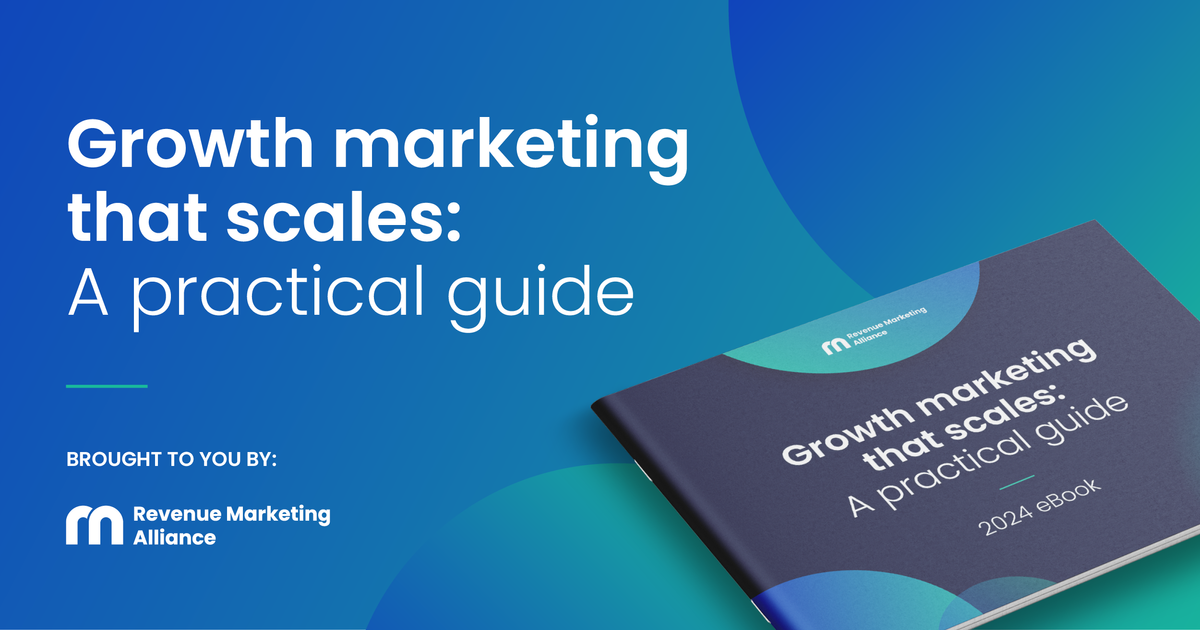Ever wonder which marketing efforts are actually driving your leads to convert and which are just burning through your budget? If so, you’re in luck because we’re here to explore the art of marketing attribution.
In simple terms, marketing attribution is all about figuring out what’s responsible for those sweet, sweet conversions. It’s the process of connecting the dots between your marketing efforts and the results they generate.
Simple, right?
Well, not exactly. With so many ways to engage with potential customers these days, from emails and social ads to blogs and events, the buyer’s journey has become more complex than ever.
You might have an email campaign with sky-high open rates, but is that what’s pushing your prospects to make that final purchase? And while it’s great to get a bird’s-eye view of your marketing performance, if you can’t zoom in and see what’s actually working, you’re flying blind.
That’s why marketing attribution is your new best friend. It analyzes and tracks the critical touchpoints in your customer’s journey, helping you understand which efforts are making the biggest impact on your revenue.
Ready to break it all down? Let’s dive into the key types of marketing attribution that’ll let you see what’s moving the needle for your business.
What is single-touch attribution?
Single-touch attribution is exactly what it sounds like – you give credit to one single touchpoint in the customer journey for a conversion.
While easy to track, single-touch models can be a bit... well, narrow. They focus on just one part of the process, which means you’re missing out on the full picture of how your leads actually engage with your marketing.
There are two main types of single-touch attribution: first-click attribution and last-click attribution.
First-click attribution
In first-click attribution, you give 100% of the credit to the very first interaction a lead has with your business. Maybe they clicked on a Facebook ad or stumbled upon your blog from a Google search – whatever that first touchpoint is, it gets all the glory.
This model is helpful for understanding which marketing channels are grabbing attention and driving initial awareness, especially in top-of-funnel activities.
But here’s the catch – by only focusing on the first touch, you’re ignoring everything else that happens afterward. Sure, you might know that your social ad caught their eye, but what about the follow-up email that nudged them to make a purchase? First-click doesn’t give you any of that context.
Last-click attribution
On the flip side, last-click attribution credits the final touchpoint before the conversion. This is the last thing a lead interacts with before making that all-important decision to buy. Think of it like giving your sales team all the credit for closing the deal, without acknowledging the marketing efforts that got the customer there in the first place.
Last-click attribution can be useful in short sales cycles where there aren’t many touchpoints, but if your leads are interacting with multiple channels over time, this model overlooks the broader journey. It’s like watching the final play of a football game and assuming that’s the only reason the team won.
Psst! Want a deeper dive into the strategies behind exponential revenue growth? Get your Growth Marketing eBook.👇

Single-touch attribution works best when your customer journey is short and sweet. But if you’ve got a more complex funnel, you’ll need to dig deeper and look beyond that one touchpoint.
Want to see the bigger picture? That’s where multi-touch attribution comes in.
What is multi-touch attribution?
If single-touch attribution feels a bit like giving out participation trophies, multi-touch attribution is like running a relay race – everyone who contributes gets some of the credit. Instead of focusing on just one touchpoint, this model spreads the credit across all the interactions a lead has with your brand throughout their journey.
As the ways to engage with customers multiply, this approach gives you a much clearer understanding of how your marketing efforts work together to drive conversions. By tracking multiple touchpoints, you can see which channels, ads, and campaigns are nudging your leads toward that final decision. It’s not just about what gets their attention first or last – it’s about everything in between.
Better still, multi-touch attribution allows you to weigh the impact of different interactions. Not all touchpoints are created equal, and this model helps you figure out which moments are actually moving the needle.
As Jorgen Davison, Marketing Strategy and Operations Manager at Slack, put it in his talk at last year’s Revenue Marketing Summit (available for RMA members to watch OnDemand):
"Even though I don’t really believe that multi-touch attribution gives you the ability to say, ‘Here’s what every dollar delivered to the business,’ it does allow you to reverse-engineer the buyer’s journey.”
This makes it an incredibly useful tool for extracting insights about the mix of touchpoints that convert versus those that don’t.
Multi-touch attribution models
There are several ways to divvy up credit among touchpoints in multi-touch attribution. Each model offers a unique way to understand your customer’s journey, depending on what insights you’re looking for.
Linear attribution model
In the linear attribution model, every touchpoint gets equal credit. Whether it’s the first ad a customer clicks or the final email they open before converting, each interaction is treated with equal importance.
This model is great for getting a holistic view of all your channels, but it doesn’t consider that some touchpoints might have more influence than others.
U-shaped attribution model
The U-shaped attribution model, also known as position-based attribution, places the most credit on two key moments – the first touchpoint and the point when the lead becomes qualified. For example, if a social media ad grabs their attention and later, a whitepaper download converts them into a qualified lead, these touchpoints get the bulk of the credit.
This model is perfect for understanding which acquisition channels are driving awareness and converting leads.
W-shaped attribution model
The W-shaped attribution model takes things a step further by adding a third key moment: when the lead converts into a customer. This model gives 30% credit to the first touchpoint, the lead qualification touchpoint, and the final conversion touchpoint, with the remaining 10% spread across all other interactions.
If you’re looking to see which channels help move leads through each major stage of the funnel, the W-shaped model is the one for you.
Time-decay attribution model
The time-decay attribution model gives more credit to the touchpoints that occur closest to the conversion. Think of it as rewarding the interactions that are freshest in your lead’s mind.
This model is great for businesses with long sales cycles, as it recognizes that touchpoints closer to the purchase decision tend to have a bigger influence.
Full path attribution model
In the full path attribution model, you’re tracking four key touchpoints:
- The first interaction
- The lead-generation touchpoint
- The moment the lead becomes sales-ready
- The final conversion.
Any remaining credit is evenly distributed across other touchpoints in the journey. This model is particularly useful if you’re running account-based marketing or need a detailed look at the entire sales process.
Data-driven attribution model
Finally, we have the data-driven attribution model, where algorithms do the heavy lifting. This model uses machine learning to determine how much credit each touchpoint should get based on how effective it was in pushing the lead toward conversion.
It’s smart, flexible, and perfect for marketers who want to let the data guide their decisions.
Multi-touch attribution might not be the magic bullet some make it out to be, but it’s a huge step up from single-touch models when you want a clearer understanding of your entire customer journey.
How to choose the right attribution model
With so many attribution models to choose from, how do you know which one’s the right fit for your marketing strategy?
The truth is, there’s no one-size-fits-all answer – it depends on your business, your sales cycle, and what exactly you’re trying to learn from your data.
But don’t worry, you’re not locked into one model forever. In fact, you can (and should) experiment with different approaches for different campaigns, channels, and products. The key is to use the insights you get to refine your strategy and keep improving your results.
With that said, here are a few key factors to consider when deciding which attribution model will give you the most useful insights:
1. How long is your sales cycle?
If you have a longer sales cycle, consider using a time-decay attribution model. It’s ideal for businesses where the final touchpoints have the most impact on conversion. However, for businesses with super short and simple customer journeys, a single-touch attribution model will do just fine.
2. How many marketing channels are you using?
For marketers running campaigns across several channels, the linear attribution model is a great way to see which channels are playing a role in your customer’s journey. However, if you want to dig deeper into specific moments, models like U-shaped or W-shaped attribution might give you more focused insights.
3. What’s the end goal of your campaign?
Your campaign’s goal also plays a big role in choosing the right attribution model. If you’re focused on brand awareness, you might lean toward a first-click or U-shaped model to see what’s bringing people into your funnel. But if you’re working on driving conversions, last-click or data-driven attribution could be the better choice.
Conclusion
Marketing is an essential tool for understanding what’s driving your business forward. Whether you’re using a simple single-touch model or diving deep into the multi-touch approach, the goal is the same – to gain insights into what’s working and optimize your efforts for better results.
By experimenting with different models and tailoring them to your sales cycle, channels, and goals, you can fine-tune your marketing strategy and make data-driven decisions that maximize your ROI.
Remember, there’s no one-size-fits-all solution, so don’t hesitate to mix things up and find what works best for your unique business needs.
Want to learn more strategies to drive your business forward? Check out “Growth marketing that scales: A practical guide”.



 Follow us on LinkedIn
Follow us on LinkedIn



